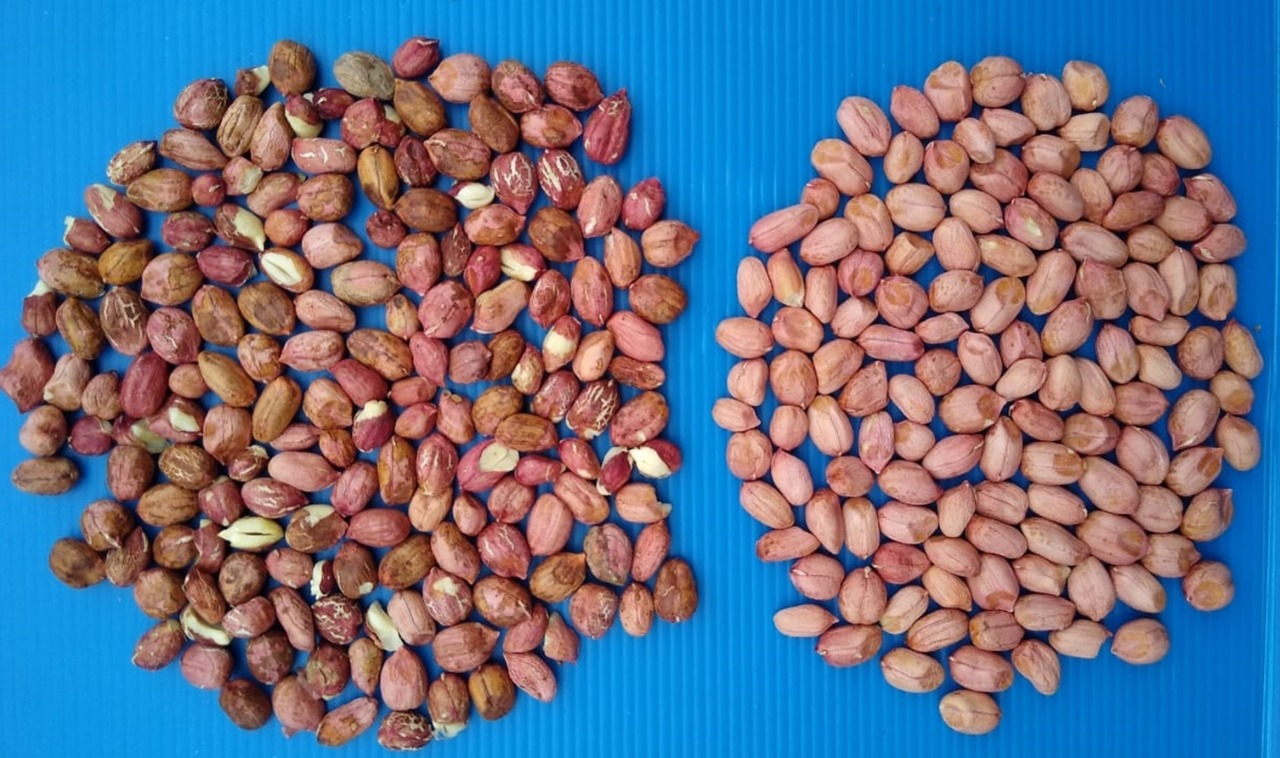Evaluation of stains on peanut grains produced under severe ring stain epidemic
DOI:
https://doi.org/10.17648/sas.v1i1.14Keywords:
Arachis hypogaea L., Improvement Program, Grain Quality, ViroseAbstract
The ring spot is a virus caused by species of the Tospovirus genus, it can also cause spots on peanut grains. Information on symptoms in grains is scarce in Brazil. Because of this, the objective was to evaluate stains on peanut grains produced under high severity of ring stain. 26 lines and the cultivar BRS 423 OL, developed by the Embrapa Peanut Breeding Program, were evaluated in the 2019/20 harvest in Tupã-SP, under a severe ring spot epidemic. Each plot had two lines with three meters in length spaced 0.90 m between lines. The plots were inverted at 122 days after sowing. Four samples of 200 grams of each genotype were collected, in a completely randomized design, and the grains stained with ring stain symptoms (presence of irregular stains, redness, cracks in the films and deformations in the grains) and healthy grains were identified to determine the mass and the percentage of spotted grains. The strain 18-2131 OL had the lowest mass and the lowest percentage of spotted grains (20.1%); strains 19-2584 OL, 18-2136 OL, 18-2042 OL and 18-2250 OL showed less than 30% of spots; the BRS 423 OL cultivar showed less than 32% of grain stain. The identification of genotypes with less symptoms in the grains is important for the development of peanut cultivars with better grain quality.
Downloads

Downloads
Published
How to Cite
Issue
Section
License
Autores concordam com os seguintes termos:
a) Os autores mantêm os direitos autorais e concedem à revista o direito de primeira publicação, com o trabalho simultaneamente licenciado sob a LicençaAttribution-NonCommercial-ShareAlike 4.0 International, que permite o compartilhamento do trabalho com reconhecimento da autoria e publicação inicial na Revista SAS. A licença permite o uso, a distribuição e a reprodução irrestrita, em qualquer meio, desde que devidamente citada a fonte. Essa licença permite também que outros remixem, adaptem e criem a partir do seu trabalho para fins não comerciais, desde que atribuam a você o devido crédito e que licenciem as novas criações sob termos idênticos.
b) Não cabe aos autores compensação financeira a qualquer título, por artigos ou resenhas publicados na South American Sciences.
c) Os conceitos expressos nos artigos publicados na South American Sciences são de inteira responsabilidade de seus autores.








